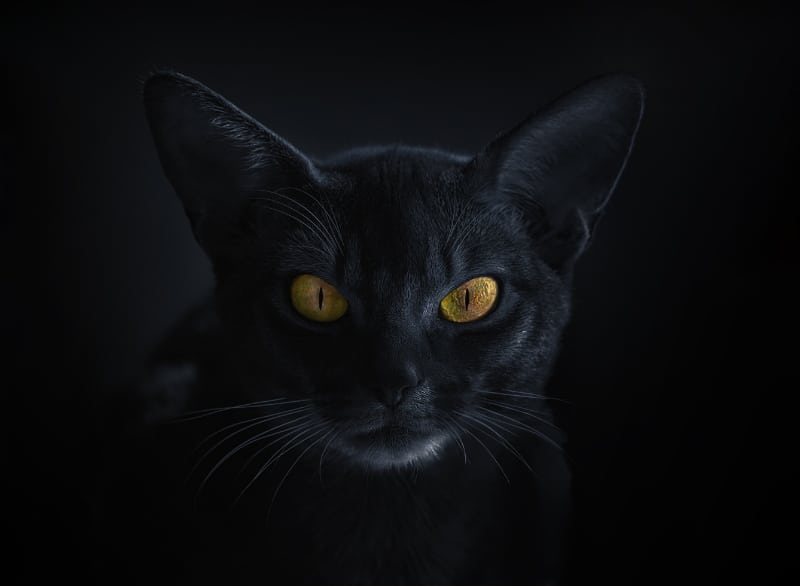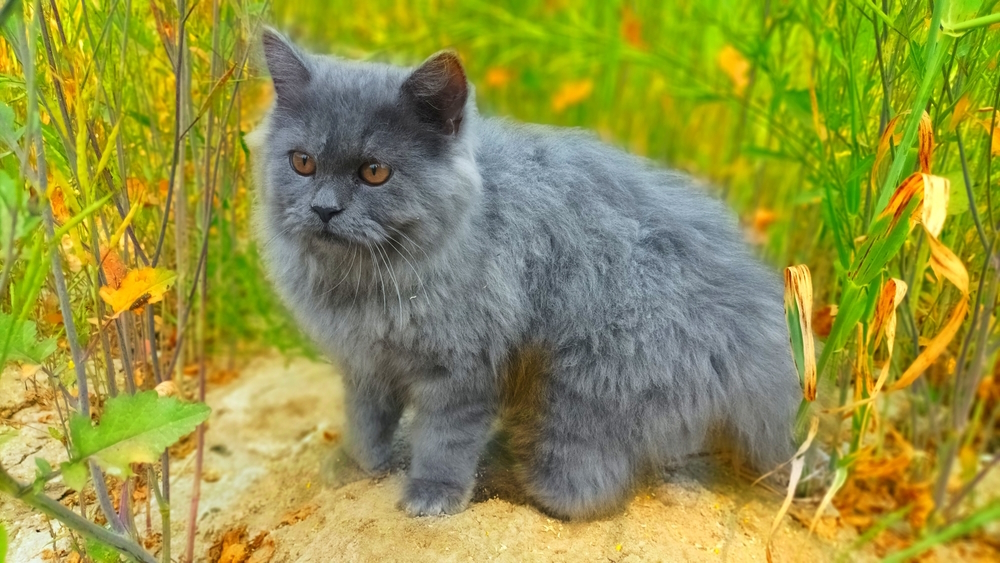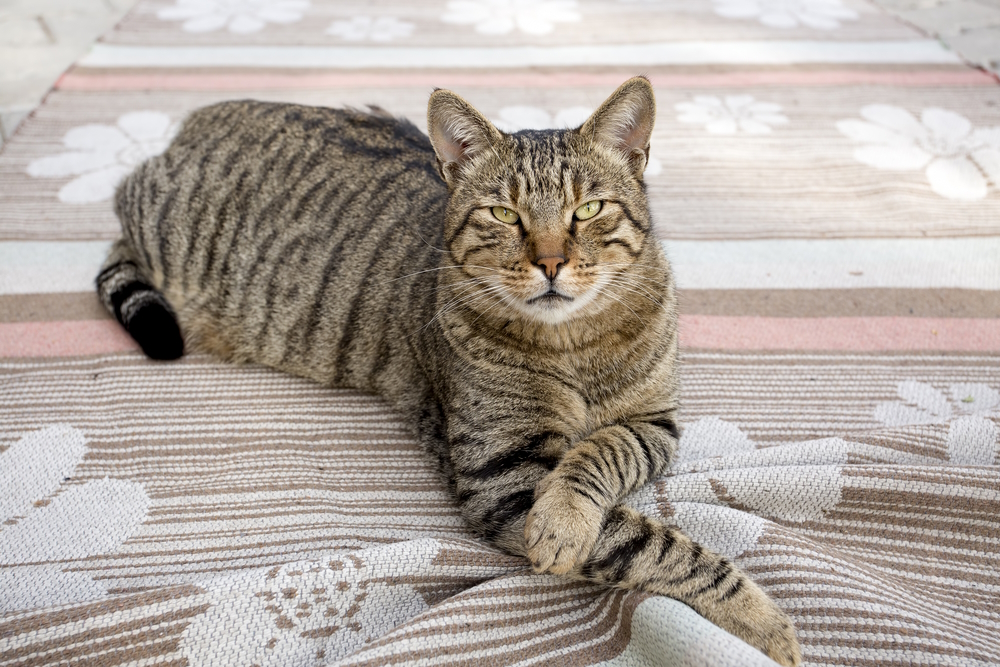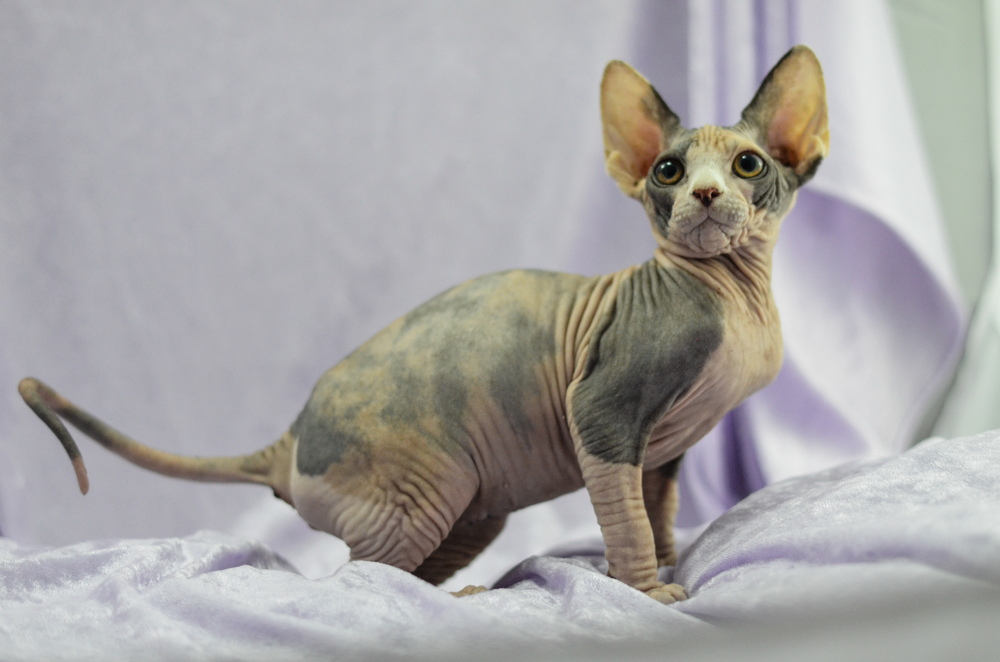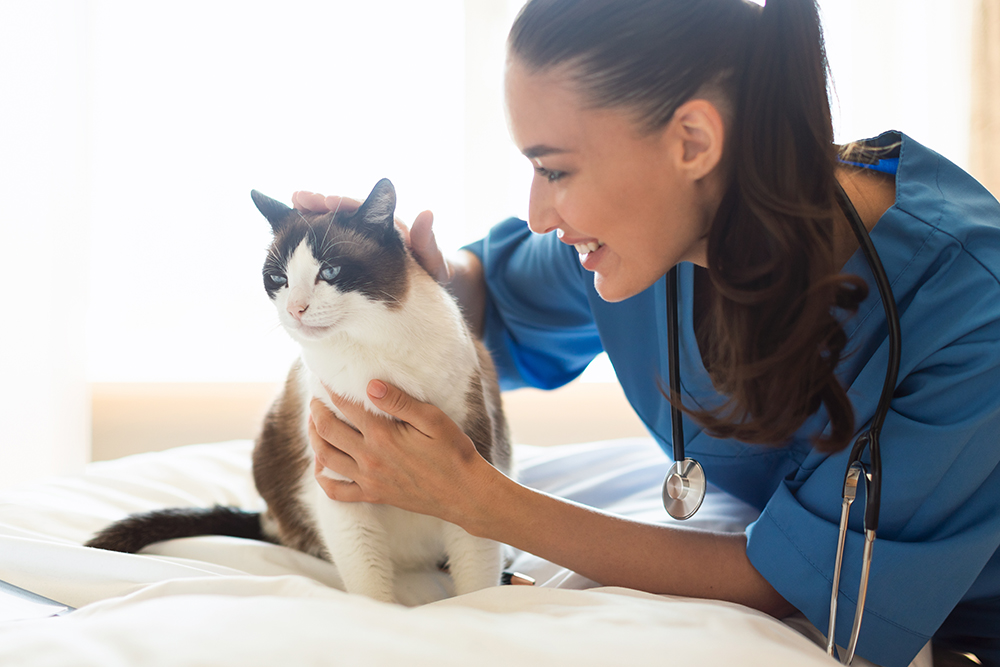Click to Skip Ahead
There are so many lovely purebred cats—each with their own special characteristics. If you have been researching lately, the Black Abyssinian may have caught your eye (and we can’t blame you!)
The Black Abyssinian is an old breed that brings so much personality into the home. If you love the comical antics of kitties, this breed will keep you entertained continually.
Breed Overview
Height:
12–15 inches
Weight:
5–10 pounds
Lifespan:
9–15 years
Colors:
Black silver, blue silver, fawn silver, sorrel silver, tortoiseshell, red, cream, chocolate, lilac
Suitable for:
Active families, multi-pet households
Temperament:
Friendly, curious, active
The ancient Abyssinian is known for several coat colors—including the delightful black variation. Let’s explore this coat color in more detail below.
Black Abyssinian Characteristics
The Earliest Records of Black Abyssinian in History
The Abyssinian is from Ethiopia (which was once called Abyssinia) and Southeast Asia. Their history remains very obscure—no one can quite agree or pinpoint when these cats popped into existence.
Geneticists have concluded that this breed most likely derives from the coast of the Indian Ocean. However, other rumors exist of Abyssinians coming to Great Britain from a wayward soldier. It’s hard to say. But one thing’s for sure—people love Abys!
It’s not quite clear when the black coat color for Abyssinians emerged either. However, the color has always been very rare and is still rare today.
How Black Abyssinian Gained Popularity
The Abysinnian gained popularity largely due to their unique appearance and personality quirks. These fine-boned cats greatly resemble wild cats in nature—particularly the Somali cat.
Their coats are very intriguing to onlookers because they usually have a sandy, solid-colored coat. Despite how solid it might look, they still fall into the tabby category.
Many love Abys because of their spry acrobatics and funny antics. It’s no wonder so many people bring the Aby into their homes.
Formal Recognition of Black Abyssinian
The Abyssinian was one of the oldest breeds of all domestic felines. It was also among the first formally recognized by TICA, or The International Cat Association. The official date of recognition was June 22nd, 1979.
However, Black Abyssinians are not among the recognized coat colors of this breed, since black is a rare coat color, so they cannot be registered.
Top 5 Unique Facts About Black Abyssinian
1. Black is a rarer Abyssinian coat color.
It’s very common to see an Abyssinian with lots of brown colors. But black is actually a very rare Abyssinian color that is not recognized. Usually, the black coat will have red or silver-toned hair underneath. These kitties tend to look like sleek, wild panthers.
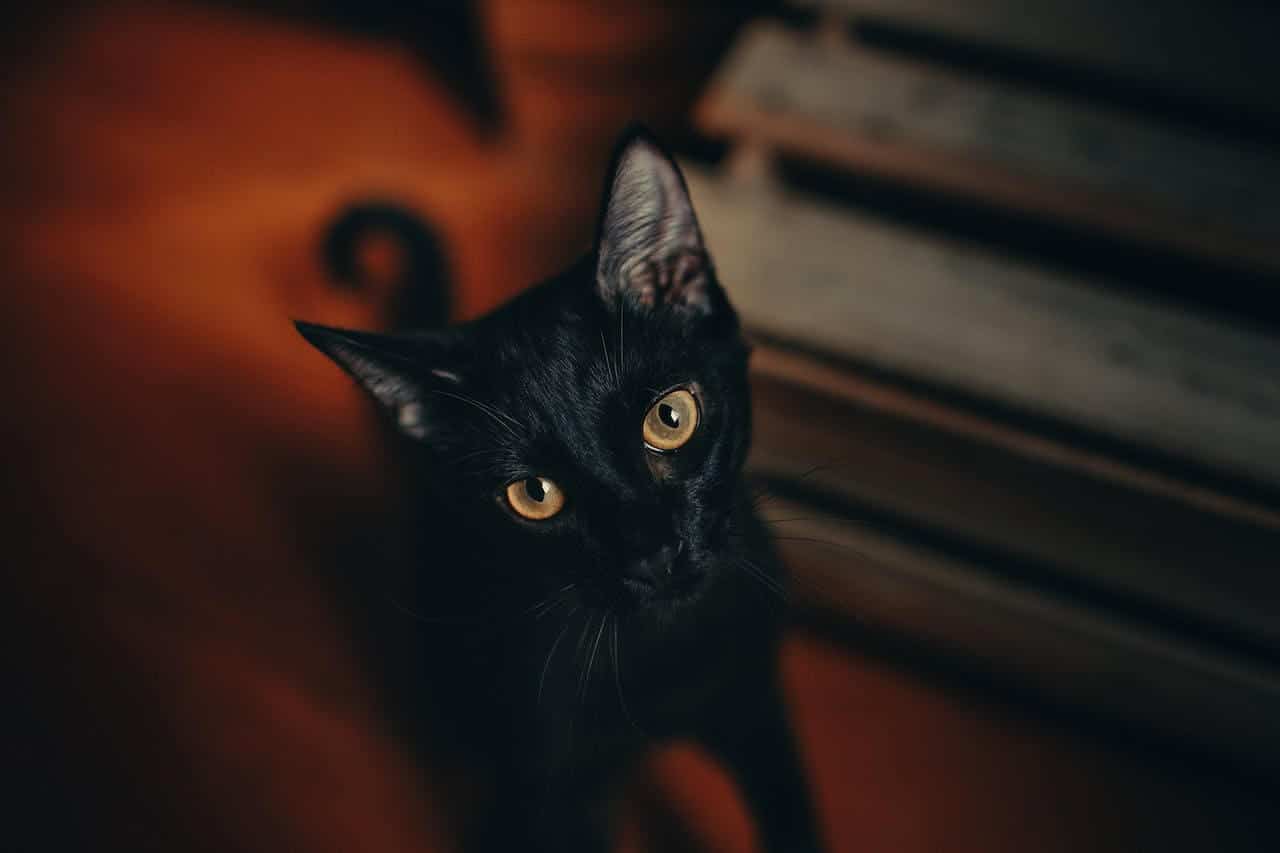
2. Abyssinians are technically tabbies with a “ticked” coat.
If you glance at an Abyssinian coat, it looks solid to the naked eye. Abyssinians have the trait of a ticked tabby pattern, given the illusion that it is solid. However, it is very faintly tabby upon extremely close examination. The real signal is the M shape on the forehead—you can’t hide a true tabby. So, this is very much the closest thing you will ever get to a truly “solid” coated Aby.
3. Abyssinians are acrobats at heart.
If you have an Abyssinian, you will quickly become accustomed to their climbing behavior. These cats love to be up, down, and all around. They benefit very greatly from having wall climbs, perches, and cat trees.
You will be greatly entertained, watching them bounce from one activity to the next. This is the kind of cat that will thrive in a home with laser pointers and interactive cat toys.
4. Abyssinians do not do well in confined spaces.
If you live in a tiny apartment or other small space, an Abyssinian is not going to be the right pet for you. Say you just rent a room at a college dorm. The Abyssinian will not be happy, locked in a singular space all day long.
They are explorers at heart and needed to have room to stretch their legs. These cats also do best when you can take them out on walks, and they can easily learn to walk on a Leash.
5. Abyssinians tend to get along very well with dogs.
Abyssinians would love to have another cat of similar activity level in the home. However, this kitty makes a very good companion for a dog as well. They tend to like a dog’s play style, wanting to romp with the pooches.
Many folks specifically look for a cat that can mesh well into the family, which usually means one that gets along well with other pets and kids—so, ding, ding, ding—you have your winner!
Does the Black Abyssinian Make a Good Pet?
The black coat does not affect an Abyssinian’s personality at all! Abyssinians of any color can make an incredible companion for the right lifestyle. If you have a very relaxed, calm atmosphere, having an Abyssinian sitting around might make things a little chaotic. These cats will get bored in a home without a lot of activity.
For this reason, the Abyssinian is a great playmate for kids and growing families. They also do very well with a variety of other animals. However, always supervise any interactions the Abyssinian has with smaller pets, as they do have quite a high prey drive.
If you have a very active lifestyle and are obsessed with the great outdoors, you and an Aby will make a perfect match! They will easily learn to walk on a leash or to ride in a backpack. They will love seeing the different sites and smelling the different smells alongside you.
Conclusion
So, now you understand a little more about the Abyssinian breed as a whole. The black color isn’t an official coat standard, but it is still possible for them to have the shade, although it is rare. Typically, there is a different color for the undercoat, giving your kitty an even more interesting look.
Abys are one of the oldest domestic cat breeds in history. On top of that, they keep many of their primal instincts—like their desire to stalk prey and their high energy. This cat works best in homes that are busy, busy, busy.
See Also:
Featured Image Credit: Dimdok, Shutterstock

